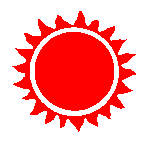DuFortier's Arboreal Hedgehog
| DuFortier's Arboreal Hedgehog | |
|---|---|
 TBD | |
| Base Information | |
| Classification | Omnivore/gatherer |
| Terrain | Forest |
| Locomotion | Walker/Climber/Glider |
| Size | 50cm, 2-3kg |
| Speed | Unknown |
| Strength | Unknown |
| Social Structure | Individual |
| Weapons | Bite |
| Armor | None/Stand-off |
| Source | |
| Homeworld | Terra (Solomani Rim 1827) |
| Multi-world | Yes |
| Canon | No |
| Extinct | Extant |
| Reference | TBD |
The DuFortier's Arboreal Hedgehog is a creature lifeform that is not a sophont.
- It is a Mammalianoid species that most closely resembles a large Terran Hedgehog crossed with a Flying Squirrel.
Description[edit]
It is a small rodent-like creature descended from even smaller forest floor inhabitants on Terra (Solomani Rim 1827). Prior to the genetic manipulation that created this spacefaring breed, the ancestral hedgehogs of Terra varied in size from roughly 0.3kg up to nearly 2kg among some cold climate species. DuFortier's average somewhat larger, between 2 and 3kg, and have morphological changes to aid in the mission they were created for: vermin control.
Physiology & Ecology[edit]
The Arboreal Hedgehog, also called a "Flyspiney", is a bilaterally symmetrical quadruped with an agile but not truly prehensile tail. They are covered with a short, heavy fur and an outer layer of modified hair that is sharp, keratinous, and useful for defense. Arboreal Hedgehogs are usually a greyish brown or greyish tan. They are quite curious, with agile paws and a more agile nose. Their tails are just long enough to help their grip on a tree branch or hatch handle.
Unlike their Terran ancestors, Arboreal Hedgehogs are agile climbers and skilled leapers. Their ancestral protective coat of spines is proportionally larger and quite flexible, and can be stretched out by splaying their limbs to aid in semi-guided gliding in sufficiently heavy atmospheres.
Life Cycle & Reproduction[edit]
Arboreal Hedgehogs have a life span of about fifteen standard years. If allowed to breed, they do so about once a year after the age of two or three, giving live birth to three to five young.
Diet & Trophics[edit]
Arboreal Hedgehogs are omnivores, preferring grubs. They will also eat fruit, other insects or other pests. While not hunters as such, they are aggressive foragers.
History & Background (Dossier)[edit]
Generally assumed to be a natural adaption of the Terran Hedgehog to life in space, the Arboreal Hedgehog is actually an old Interstellar Wars era GenAssist project to aid various colonization efforts. Considerably larger than their stay-at-home ancestors, Arboreal Hedgehogs are also more active, less prone to hibernation, and every bit as curious and voracious.
Arboreal Hedgehogs are readily domesticated, and are used as pets on several worlds. They can be trained to recover items or as pest control.
Derived Products (Goods)[edit]
They make good pets and are popularly sold as such. They are particularly well suited to shipboard life, and are seen all over Charted Space as ship's pets, valued for their talents at pest control and adaption to low gravity. Passengers aboard a Flyspiney's ship are advised to round corners cautiously, as long corridors with clear glide paths are favorite "hunting" ground for mischievous Arboreal Hedgehogs.
Travellers' Aid Society Advisory[edit]
The Travellers' Aid Society (TAS) classifies the DuFortier's Arboreal Hedgehog as non-threatening to most sophonts and makes no special advisory regarding this creature.
Image Repository[edit]
No information yet available.
Worlds & Sectors (Astrography)[edit]
This creature can primarily be found in the following areas:
Charted Space:
They can, however, be found all over Imperial, Julian, and, surprisingly, Zhodani space.
Homeworld: 1105[edit]
The homeworld of this creature is:
References & Contributors (Sources)[edit]
| This article is missing content for one or more detailed sections. Additional details are required to complete the article. You can help the Traveller Wiki by expanding it. |
- [1]dead link
- Author & Contributor: James Kundert